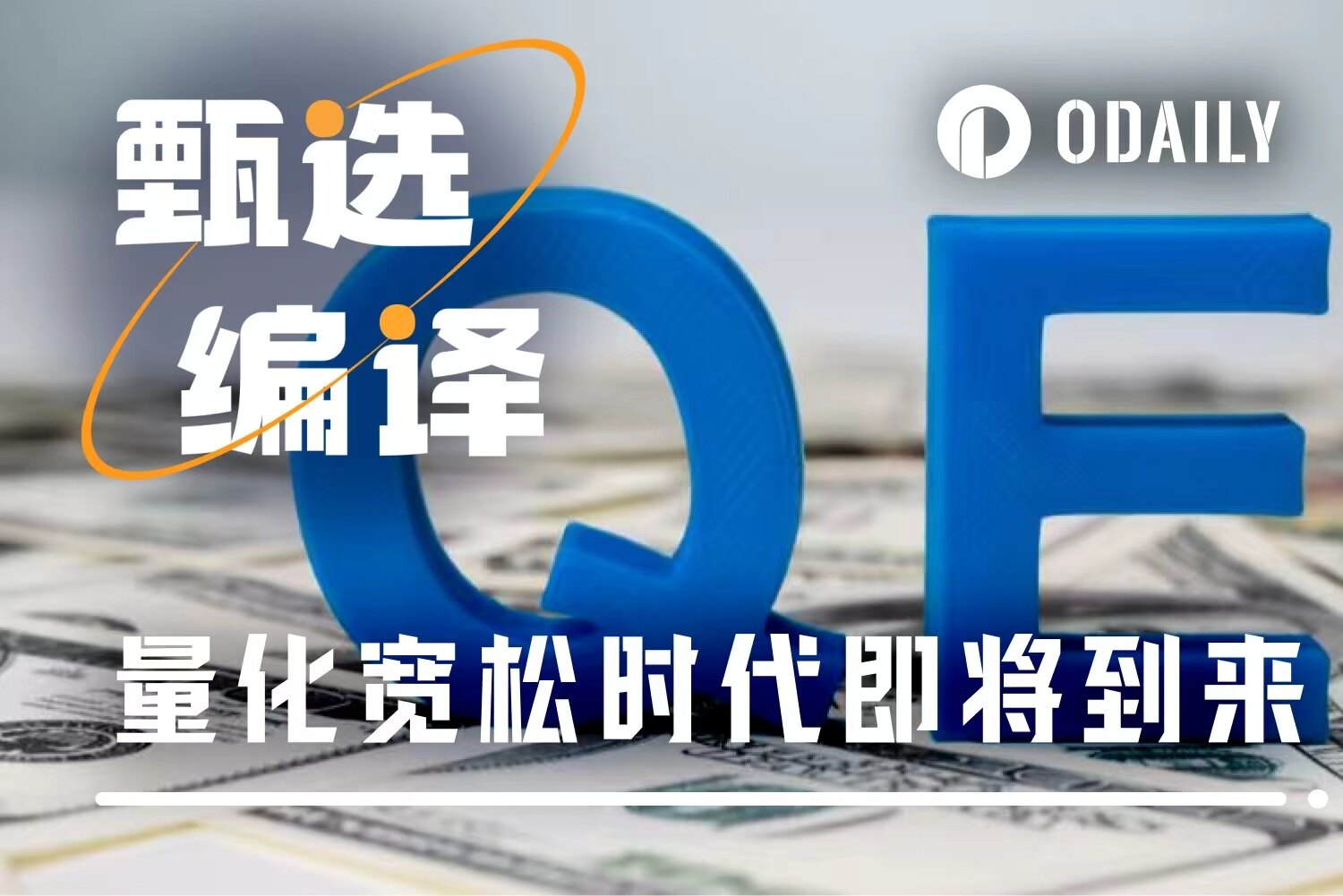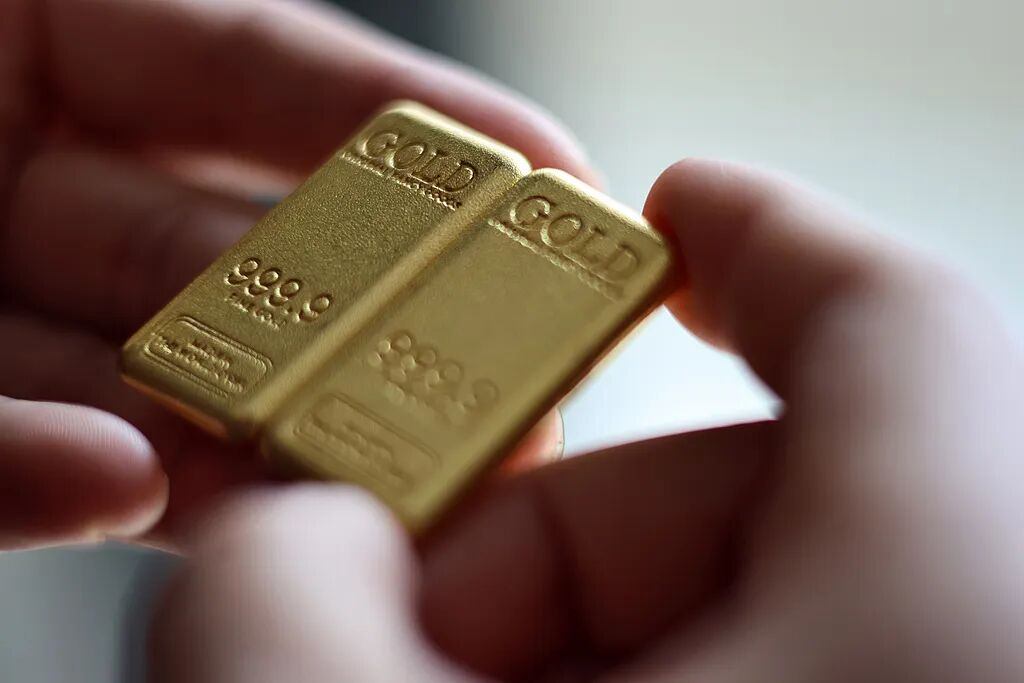Author | @RayDalio
Compiled by | Odaily Planet Daily (@OdailyChina)
Translator | Dingdang (@XiaMiPP)

Did you see that the Federal Reserve announced it would stop quantitative tightening (QT) and start quantitative easing (QE)? Although the official term is that this is just a "technical operation," it is nonetheless a substantial easing measure. For me, this is one of the signals worth closely monitoring to track the progress of the "Big Debt Cycle" I described in my last book.
As Chairman Powell said: "… at some point, we hope reserves can begin to grow gradually to accommodate the expansion of the banking system and the economy. So we will start increasing reserves at some point…"
How much the Federal Reserve will increase reserves is something we must focus on observing next.
Since one of the core responsibilities of the Federal Reserve is to control the "size of the banking system" during asset bubbles, we need to pay attention to both the pace of easing through interest rate cuts and the speed of its balance sheet expansion. More specifically, if the following situations occur in the future:
- Significant expansion of the balance sheet;
- Continuous reduction of interest rates;
- Large fiscal deficits remain;
Then it can be seen as a typical scenario of "the Treasury and the Federal Reserve working together to stimulate the economy by monetizing government debt."
If this situation occurs when private credit and capital market credit creation are still strong, the stock market is hitting new highs, credit spreads are low, unemployment is near historical lows, inflation is above target, and AI-related stocks are in a bubble phase (as my bubble indicators indeed suggest), then in my view, the Federal Reserve's stimulus policy is akin to creating a bubble.
Given that the government and many policymakers now advocate for significant relaxation of restrictions to achieve "capitalism-style growth spurts" through monetary and fiscal policies; and considering the massive deficits, debts, and the growing contradiction between supply and demand for bonds, I have every reason to suspect that this so-called "technical adjustment" may not be just a technical issue.
I understand that the Federal Reserve is currently highly focused on "funding market risks," thus tending to prioritize market stability over aggressively combating inflation, especially in the current political environment. However, whether this will evolve into a comprehensive QE stimulus (i.e., large-scale net asset purchases) remains to be seen.
At this point, we should not overlook the fact that when the supply of U.S. Treasury bonds exceeds demand, the central bank is forced to "print money" to buy bonds, and the Treasury shortens the issuance period to compensate for the long-term bond demand shortage, these phenomena are typical characteristics of the "late stage of the Big Debt Cycle."
Although I have systematically explained its operating mechanism in my book "How Countries Go Broke: The Big Cycle," I want to point out that we are approaching a critical juncture in this cycle and briefly review the logic behind it.
Give a man a fish and you feed him for a day; teach a man to fish and you feed him for a lifetime
I hope to help you understand what is happening by sharing my thoughts on market mechanisms. I will point out the logic I see, while how to judge and act is left to you, as that is more valuable for you and avoids me becoming your investment advisor (which is also more suitable for me).
As you can see in the chart below, when the Federal Reserve or other central banks buy bonds, it releases liquidity and lowers real interest rates. What happens next depends on where this liquidity flows.

- If liquidity primarily stays in the financial asset market, then financial asset prices will be pushed up, real yields will decline, price-to-earnings ratios will expand, risk spreads will narrow, and gold prices will rise, thus creating "financial asset inflation." This situation will benefit those holding financial assets while marginalizing those without assets, thereby widening the wealth gap.
- Generally, some liquidity will transmit to the commodity, service, and labor markets to some extent. However, in the current context of automation accelerating the replacement of labor, this transmission effect may be weaker than in the past. If inflation is pushed up to a certain extent, the rise in nominal interest rates may exceed the decline in real interest rates, thus simultaneously hitting both bonds and stocks in nominal and real terms.
The essence of QE: transmission through relative prices
All fluctuations in financial markets stem from changes in relative attractiveness rather than absolute levels.
In simple terms, everyone has a certain amount of funds and credit, and central banks influence these amounts through policy. People's investment decisions depend on the comparison of expected returns between different assets.
For example, people decide whether to borrow or lend funds based on the comparison of borrowing costs and potential returns. The choice of asset allocation mainly depends on the relative total returns of various options (i.e., asset yield + price change). For instance, gold has a yield of 0%, while the yield on 10-year U.S. Treasuries is about 4%. If you expect gold to rise less than 4% per year, you would choose bonds; conversely, if you expect it to rise more than 4%, gold becomes more attractive.
When judging the performance of gold or bonds, inflation must be considered, as inflation erodes purchasing power. Generally, the higher the inflation, the better gold performs—because currency depreciation leads to a decline in purchasing power, while the supply of gold grows limited. This is also why I always pay attention to the supply of money and credit, as well as the movements of the Federal Reserve and other central banks.
In the long run, the value of gold is highly correlated with inflation trends. The higher the inflation rate, the lower the attractiveness of bonds. For example, when inflation is 5% and bond yields are only 4%, the real yield on bonds is -1%, which reduces their attractiveness while increasing the attractiveness of gold. Therefore, the more money and credit the central bank issues, the higher I expect the inflation rate to be, and the lower the attractiveness of bonds relative to gold.
All else being equal, if the Federal Reserve further expands QE, it is expected to lower real interest rates and increase liquidity by compressing risk premiums, lowering real yields, and pushing up price-to-earnings ratios, especially boosting the valuations of long-duration assets (such as technology, AI, and growth stocks) and inflation-hedged assets (such as gold and inflation-linked bonds). When inflation risks reawaken, companies with physical asset attributes (such as mining, infrastructure, energy, etc.) may outperform pure technology assets.
Of course, these effects have a lag. The decline in real interest rates triggered by quantitative easing will gradually manifest after inflation expectations rise. Nominal valuations may still expand, but real returns will be weakened.
Therefore, we can reasonably expect that scenarios similar to the end of 1999 or 2010-2011 may reoccur—liquidity-driven surges will eventually become too risky and must be curtailed. And during this fervent phase, as well as before the eventual tightening, is often the best time to sell.
This time is different: the Federal Reserve is "easing in a bubble"
While I expect its mechanism to operate as I described, the conditions for implementing this quantitative easing policy are fundamentally different from the past. Because this time, the goal of the easing policy is the formation of a bubble rather than the bursting of a bubble. More specifically, the implementation of past quantitative easing policies was as follows:
- Asset valuations fell, prices were low, or were not overvalued;
- The economy was contracting or extremely weak;
- Inflation levels were low or declining;
- Debt and liquidity risks were prominent, with large credit spreads.
Thus, quantitative easing policies were "stimulating economic recession."
Now, the situation is exactly the opposite:
- Asset valuations remain high and continue to rise. For example, the S&P 500 earnings yield is 4.4%, the nominal yield on 10-year U.S. Treasuries is 4%, the real yield is about 1.8%, and the equity risk premium is only about 0.3%;
- The economy is relatively robust (with actual growth of about 2% over the past year and an unemployment rate of only 4.3%);
- Inflation is above target (slightly above 3%), but at a relatively moderate level, while de-globalization and tariff frictions further push up prices;
- Credit is abundant, liquidity is sufficient, and credit spreads are near historical lows.

Therefore, this round of quantitative easing will not be "stimulating economic recession," but rather "stimulating economic bubbles."
Let’s take a look at how these mechanisms typically affect stocks, bonds, and gold.
Given that government fiscal policy is currently highly stimulative (mainly due to the large existing debt size, severe fiscal deficits, and the Treasury issuing a large amount of government bonds in a relatively short period), quantitative easing (QE) effectively amounts to monetizing government debt, rather than merely injecting liquidity into the private system.
This is precisely the fundamental difference between the current situation and the past—it appears riskier and more inflationary. Overall, it resembles a bold and dangerous gamble: betting on growth, especially growth driven by artificial intelligence, supported by extremely loose fiscal, monetary, and regulatory policies. We must closely monitor this process to respond correctly in a complex macro environment.
免责声明:本文章仅代表作者个人观点,不代表本平台的立场和观点。本文章仅供信息分享,不构成对任何人的任何投资建议。用户与作者之间的任何争议,与本平台无关。如网页中刊载的文章或图片涉及侵权,请提供相关的权利证明和身份证明发送邮件到support@aicoin.com,本平台相关工作人员将会进行核查。




